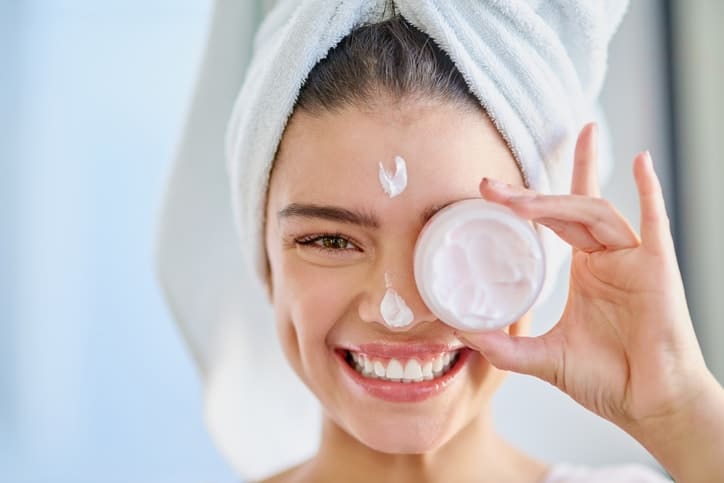Importance of pH in Skincare: Why It Matters for Beauticians
For many beauticians and skincare enthusiasts, the concept of pH balance is not just a buzzword, but a crucial component of effective skincare. Understanding the importance of pH in skincare is essential for crafting routines that promote healthy, glowing skin. The pH level of a product can significantly influence its effectiveness, making it a critical factor in the selection and application of skincare products.
The skin's natural pH is slightly acidic, typically around 5.5. Maintaining this balance is vital because it forms part of the skin's barrier functionprotecting against environmental aggressors like bacteria and pollutants. Disruptions to this balance can lead to issues such as dryness, irritation, and acne. Thus, the importance of pH in skincare cannot be overstated, especially for professionals looking to optimize their clients' skincare regimens.

Understanding pH Levels in Skincare
pH, or 'potential of hydrogen,' measures how acidic or alkaline a solution is on a scale from 0 to 14. A pH of 7 is neutral, while anything below is acidic and above is alkaline. Our skin's acid mantle, a thin film on the surface, is naturally acidic. This acidity helps to keep the skin supple and acts as a barrier to harmful bacteria and fungi.
When skincare products disrupt the skin's natural pH, it can compromise this barrier function. For beauticians, understanding the role of pH in skincare is crucial in recommending products that support rather than hinder the skin's natural processes. Products with a pH that mirrors the skin's natural level can help maintain this delicate balance.
How pH Affects Different Skin Types
Different skin types can react differently to changes in pH. For instance, oily skin might benefit from slightly more acidic products to help control excess sebum production. On the other hand, sensitive skin might require products that are closer to neutral to avoid irritation. As a beautician, tailoring skincare recommendations based on skin type and pH can lead to more effective and personalized care.
Many beauticians find that clients with acne-prone skin benefit from products that lower the skin's pH slightly, making it less hospitable to acne-causing bacteria. Conversely, those with dry skin might need products that are less acidic to avoid further stripping the skin of its natural oils. Understanding these nuances is part of why the importance of pH in skincare is such a critical topic in the beauty industry.
Choosing the Right Products
Selecting the right products starts with understanding their pH levels. Many labels do not explicitly state the pH level, so beauticians often need to rely on product reviews or conduct their own tests using pH strips. Opt for products that are labeled as 'pH balanced' to ensure they are formulated to work in harmony with the skin's natural pH.
Moreover, understanding the pH of ingredients can also be beneficial. For example, alpha hydroxy acids (AHAs) and beta hydroxy acids (BHAs) are popular exfoliants that have different pH levels and effects on the skin. AHAs are typically more acidic and can help with removing dead skin cells, while BHAs can penetrate deeper into the pores, making them ideal for oily and acne-prone skin.
The pH of Common Skincare Ingredients
Many active ingredients in skincare have specific pH levels at which they are most effective. Vitamin C, for instance, is more stable and effective in an acidic environment. Conversely, niacinamide is best used at a pH closer to the skin's natural level. Beauticians must be aware of these specifics to recommend products that will maintain the skin's health and efficacy.
Another critical ingredient is hyaluronic acid, known for its hydrating properties. While it's naturally acidic, it's formulated to work with the skin's pH without causing irritation. Understanding how these ingredients interact with the skin's pH can guide beauticians in crafting skincare routines that maximize benefits while minimizing potential side effects.
The Role of pH in a Skincare Routine
A skincare routine that respects the skin's natural pH is more likely to produce long-lasting results. For beauticians, advising clients on pH-friendly routines can make a significant difference. Start with a gentle cleanser that respects the skin's pH, followed by toners, serums, and moisturizers that work together to maintain balance.
For more detailed guidance, consider checking out this skincare order guide to ensure each step in your routine supports the skin's natural pH. Additionally, internal resources such as the best face masks for acne or a skincare routine for over 40 can provide further insights on how to tailor routines for specific needs.

FAQs
What happens if the skin's pH is unbalanced?
An unbalanced pH can lead to various skin issues, including dryness, sensitivity, acne, and accelerated aging. Maintaining a balanced pH helps protect the skin from external aggressors and retain moisture.
How can I test a product's pH?
pH strips are a simple way to test a product's pH. Apply the product to the strip and match the color change to the pH scale provided with the strips. This can help ensure you're selecting products that align with your skin's needs.
Can pH-balanced products benefit all skin types?
Yes, pH-balanced products are designed to complement the skin's natural pH, making them suitable for all skin types. However, specific formulations may better benefit certain skin conditions, so it's important to tailor choices based on individual needs.
By understanding the importance of pH in skincare, beauticians can make informed decisions that enhance their clients' skin health and appearance. This knowledge not only elevates the quality of care provided but also empowers clients to maintain their skin's natural balance at home.
This article contains affiliate links. We may earn a commission at no extra cost to you.

